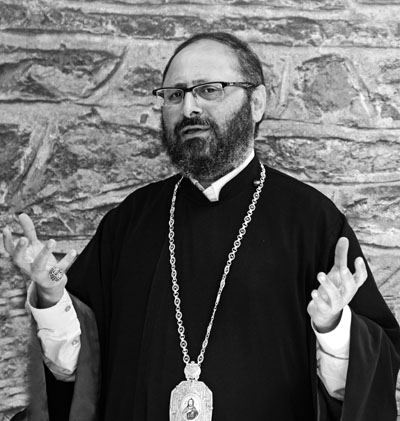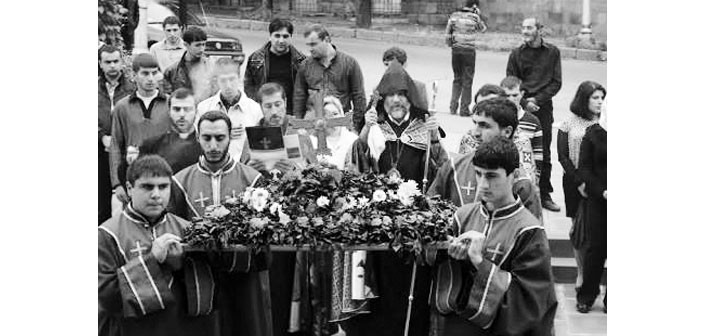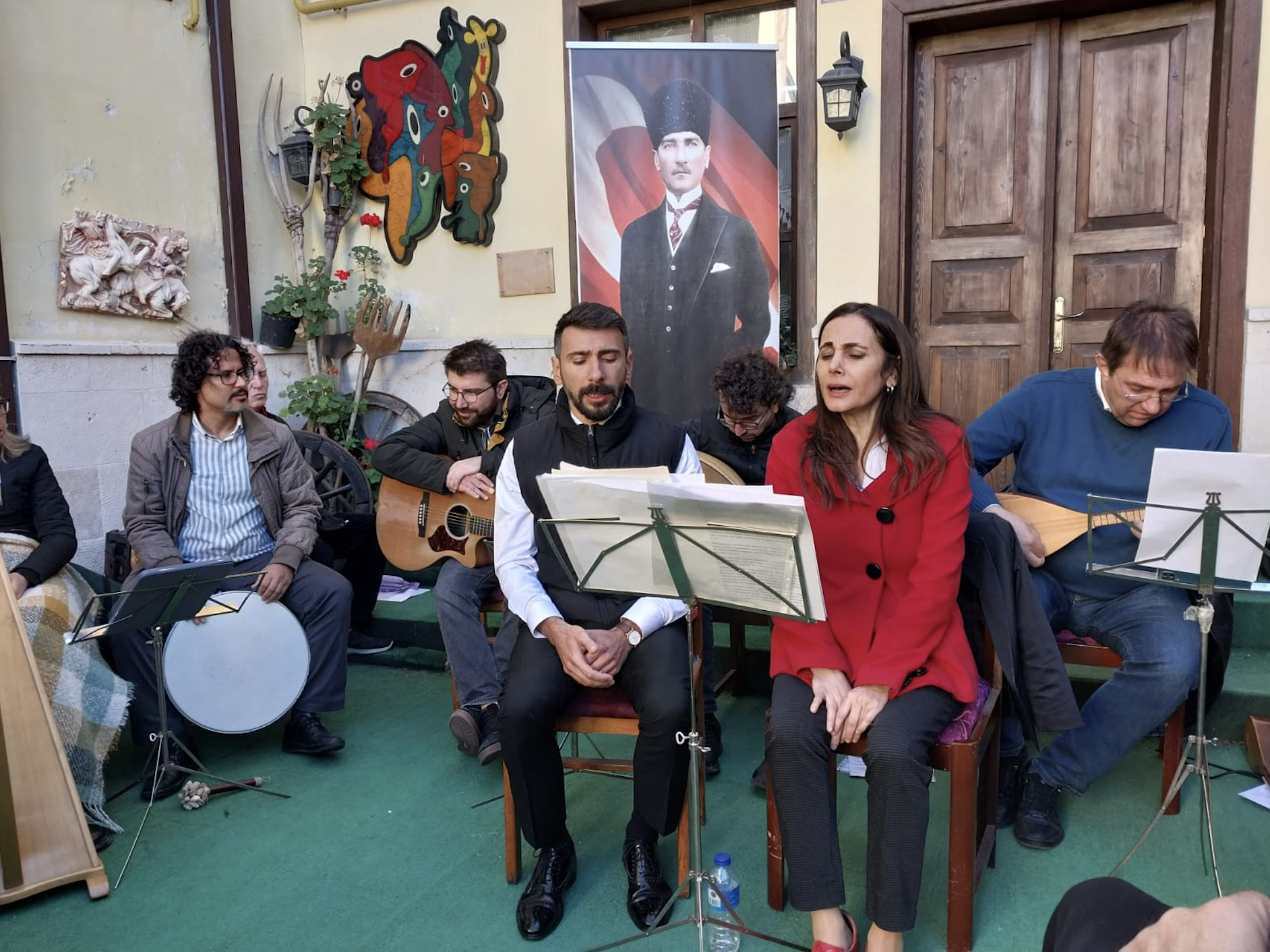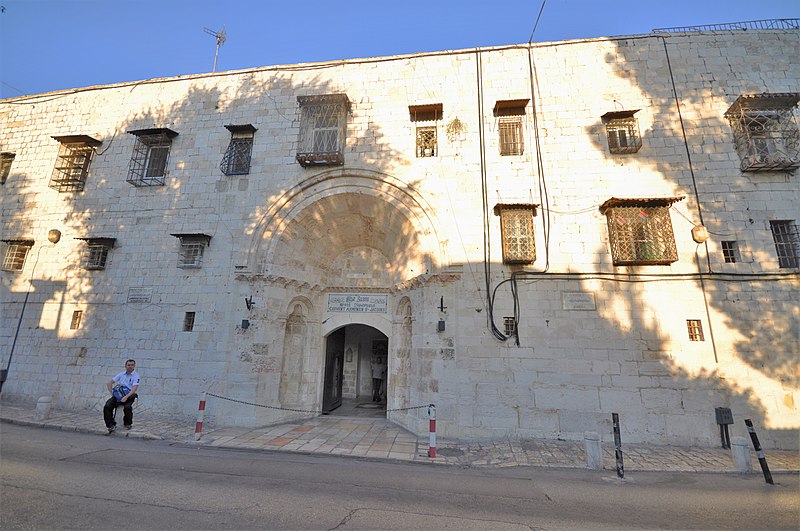A historical event happened in 7th century (628) is the source of celebration of Khachverats (the Exaltation of the Holy Cross), which is one of the five major holidays of our church. Before the feast that will be celebrated in our churches on Sunday, it is better to remember the historical background.
The eternal conflict between Christian Byzantine and Zoroastrian Persian empires escalated, when Persian emperor Khosrow II ascended to the throne. Especially from 610 onward, Khosrow II had been increasing the military campaigns to Byzantium. Trying to block the Persian campaign in Asia Minor, the Byzantine army couldn’t have prevented Persian army from entering Palestine. Persian armies sacked Jerusalem, the holy capital of Christianity (614). People had been massacred. All the churches, including the Church of the Holy Sepulchre, were looted and burnt to the ground. The wooden cross used in the crucifixion of Jesus Christ, which is the greatest and most important relic of Christianity, was taken and Patriarch of Jerusalem Zakaria was captured; both of them were taken to Persia. This insulting defeat caused a great sorrow in the entire Christian world. Byzantine emperor Heraclius (610-641) started to plan a major campaign. After the preparation period lasted for 14 years, he attacked Persia. Armenian army led by Mjej Knunu also took part in this campaign. This great Christian army defeated all the Persian armies and seized the capital. Khosrow II was killed and his son handed over the Holy Cross and demanded peace. Thus, the Cross passed to the Christian world after 14 years of captivity.
The rescued cross showed around in Christian countries and this memory is immortalized with a major feast. Our church commemorates this event with Antasdan service in which the processional cross is adorned with flowers (especially basil). This holiday is an opportunity for reflecting on the meaning of the Cross, which is the symbol of our faith.
Cross is an international symbol
Limiting the Feast of the Exaltation of the Holy Cross with a victory of Christian armies would diminish the meaning of the feast. In fact, such an approach amounts to praising arrogance, which is in sharp contrast with Christianity. What we celebrate is neither Christian chauvinism nor a crusader victory. What we celebrate is the recovering a precious thing that we lost and rediscovery of its meaning for us. The Cross should be rediscovered by every generation all over again; it should be exalted and praised, since it might be the most effective, and maybe the only way to solve many personal and social problems. However, as the first step, we should understand the Cross very well and clean up its partisan meanings. Though the Cross is a Christian symbol, its meaning is universal; it is the most mysterious symbol of any kind of self-sacrifice.
Being a Christian is carrying a cross
This is a major mystery and the ones who cannot comprehend it shouldn’t claim that they have understood the Cross of Jesus. Only the ones who can comprehend the mystery of this self-sacrifice can carry their own cross with joy, fixing their gaze to the glorious death of Jesus. “Whoever does not take up their cross and follow me is not worthy of me” (Matta 10:38). For us, the Christians, this should bear more meaning than carrying a golden cross around the neck. We should understand this as Paul the Apostle: “Those who belong to Christ Jesus have crucified the flesh with its passions and desires… I have been crucified with Christ and I no longer live, but Christ lives in me” (Gal. 2:20, 5:24). The major problem of the earth is selfishness. Behind every trouble of humankind, there is the ugly face of selfishness. And we know very well that every noble success comes from self-sacrifice. Faith in God should encourage such self-sacrifice and create such discipline inside us that incites love, devotion, sharing and solidarity instead of selfishness.
When the pseudo-self, meaning the flesh (nafs), is adorned with the Cross, the person embraces its true self and acknowledges the productivity of living the life to the fullest. Since only the ones who lost themselves in God and others can find themselves again. A seed actualizes its potential only when it falls on the soil, and it can only become a tree, if it gives up being a seed.
There is no doubt that the Cross is the greatest symbol of Christianity. Our Savior sacrificed himself and offered his life for the sinner humankind and reconciled humankind with God thanks to his blood shed on the Cross. “For God so loved the world that he gave his one and only Son, that whoever believes in him shall not perish but have eternal life” (John 3:16). So, the Holy Cross is such an important symbol for Christians that it is worthy of all praises and exaltation.
Feast of the Holy Cross of Varak (Varaka Khach)
This is a holiday peculiar to Armenian history and it is about the cross used in the crucifixion of Jesus Christ. Visiting Jerusalem during 1st century, the faithful Queen Patronike requested a piece from the Cross of Jesus as a souvenir. She kept this holy present like a treasure and bequeathed it to the faithful women from her family. St. Rhipsime, a Roman noble descending from Patronike, ran away from Rome to Egypt with other faithful women, when the oppression toward Christians started; she took the remnant of the True Cross with herself. When their identities were revealed in Egypt, they went to Armenia through Syria and settled on the slopes of Mount Varag near Van. Then, when they were forced to leave again, Rhipsime trusted the remnant of the True Cross with a monk there. It had been known that this monk buried it somewhere around the mountain before he died. After Armenians converted to Christianity, this mountain attracted many monks. They all wanted to find this precious treasure. After 3 centuries of search, prayer and suffering, God miraculously showed the location of the remnant of the Cross to two monks called Totik and Hovel. One night, a cross made of light appeared in the sky. Heading toward it, two monks found the silver box and the remnant. This light was seen by other people, which is the proof of the miracle. Catholicos Nerses III the Builder turned this event into a holiday and built the Church of Surb Nshan (Holy Seal), which is in ruins today.





